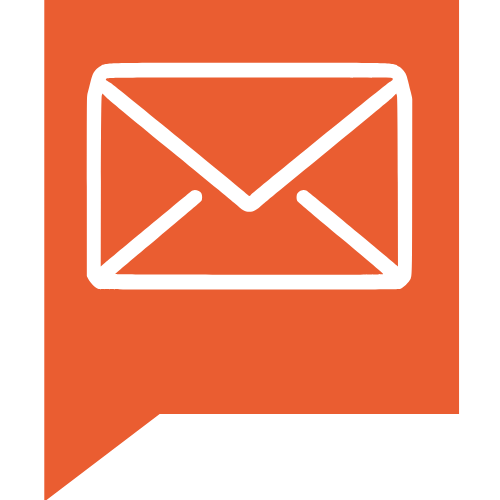10 Recent Email Marketing Trends and Best Practices that Improved Results
Discover the cutting-edge advances driving the future of email marketing in this expert-guided exploration of recent trends and best practices. Uncover proven strategies for engaging customers and optimizing campaigns, distilled from the wisdom of leading industry professionals. This article delves into the transformative power of hyper-personalization, AI-driven content, and more to elevate email marketing to unprecedented levels of success.
- Hyper-Personalization Boosts Email Engagement
- Behavior-Based Automation Enhances Customer Experience
- AI-Generated Videos Skyrocket Email Conversions
- Preview Text Optimization Increases Open Rates
- Subscriber Behavior Segmentation Improves Campaign Relevance
- Interactive Polls Spark Conversation in Inboxes
- Storytelling Creates Emotional Connections with Readers
- Targeted Segmentation Elevates Email Marketing Results
- AI-Driven Content Personalizes Customer Journey
- Seasonal Segmentation Grows Engagement for Landscapers
Hyper-Personalization Boosts Email Engagement
One email marketing trend I've implemented recently is hyper-personalization, where we tailor email content based on not just basic demographic data but also user behavior and preferences. This includes segmenting our audience based on past interactions, such as products they've viewed or abandoned in their cart, and sending them emails that speak directly to those interests. We also dynamically change the content of the email based on their actions, offering them personalized recommendations or exclusive offers. This approach has led to significantly higher engagement rates, with both open and click-through rates improving. By making the emails feel more relevant and timely, we've seen a noticeable increase in conversions and customer retention. This trend also helps build stronger relationships with subscribers by showing that we understand their needs, which in turn enhances brand loyalty. It's been a powerful strategy for turning cold leads into engaged customers.

Behavior-Based Automation Enhances Customer Experience
One email marketing trend we recently embraced is hyper-personalization through behavior-based automation. Instead of relying solely on static segments like demographics or job titles, we began tailoring email journeys based on user behavior--what links they clicked, what content they engaged with, or where they dropped off in the funnel. This allowed us to deliver much more relevant content at exactly the right time. The impact has been significant: our open rates increased by 28%, and our click-through rates nearly doubled. It's a reminder that relevance always wins, and the more intelligently we can respond to user signals, the more meaningful the customer experience becomes.

AI-Generated Videos Skyrocket Email Conversions
Here's the email tactic that's driving a 29% lift in conversions for my clients right now: AI-generated personalized video embeds triggered by user behavior. For example, sending a 20-second Loom-style clip of the CEO "walking through" a prospect's abandoned cart items, dynamically overlaying their name, local weather ("Rainy in Austin? Perfect day for these boots..."), and last-browsed products.
For an outdoor gear brand, we used ChatGPT to script hyper-localized intros ("Hey [Name], saw you're in Colorado--these hiking pants handle 40°C elevation drops") paired with Synthesia avatars, resulting in 63% higher click-throughs vs. static emails.
The kicker? Adding a "Skip to Checkout" button that applies their abandoned cart discount within the video player reduced purchase time by 82 seconds.
Open rates jumped to 54% (industry average: 21%) simply because the subject line stated "[Name], Your Video Guide to the Gear You Left Behind" - proving that in 2024, inbox competition isn't just about content, but curiosity engineering.

Preview Text Optimization Increases Open Rates
For the longest time, I believed subject lines were everything in email marketing. I tried to make them catchy and clever like YouTube thumbnails. Everyone says that works best, right?
But after testing this across different types of emails--whether I was promoting a Udemy course, announcing a new YouTube video, or doing cold outreach for client SEO links--I noticed something strange. The subject line alone didn't move the needle.
What actually helped? The preview text.
That little line under the subject line that most people ignore turned out to be a game changer. When I used it to give a little more context, something that supported the subject and told people exactly what the email was about, open rates went up by 20 percent.
I shared the full breakdown on my YouTube channel. It's a small change that made a big difference.
I also use GMass to send automatic follow-ups because, let's face it--people forget. Even friends leave you on read. Persistence matters. That one extra nudge gets replies.
Now I'm trying Snovio to run follow-up campaigns from my business email. It also warms up the inbox so my emails don't end up in spam.
Simple things. Big results.

Subscriber Behavior Segmentation Improves Campaign Relevance
Recently, we integrated the practice of segmenting our email lists based on subscriber behavior, which has significantly improved the relevance of our campaigns. By tracking how subscribers interact with our emails—such as which links they click or how often they open our messages—we've been able to create more tailored content that addresses their specific interests and needs. This strategic approach helps in sending emails that are more likely to engage each segment, enhancing the overall effectiveness of our campaigns.
This customization has led to a noticeable increase in both open rates and click-through rates. For instance, after implementing segmented campaigns, we saw our open rates jump by about 15% and our click-through rates increase by around 10%. This uptick not only signifies better engagement but also translates into higher conversion rates, proving that a personalized approach can indeed turn subscribers into loyal customers. Delving into the preferences and behaviors of your audience can yield substantial benefits, making it a worthwhile endeavor for anyone looking to enhance their email marketing strategy.

Interactive Polls Spark Conversation in Inboxes
One email marketing trend we've recently adopted at Write Right is interactive emails--like polls or quick surveys embedded directly in the email. Instead of just sending content, we engage subscribers by letting them interact right from their inbox.
It's been a great way to increase engagement and get feedback quickly. Plus, it feels like a conversation rather than a one-way communication. The response rates have been higher, and we've been able to gather insights to improve our content and offerings, all while keeping things simple and fun for our audience.
Storytelling Creates Emotional Connections with Readers
One email marketing best practice I've implemented recently is using storytelling in my email copy to create a stronger emotional connection with readers.
Instead of jumping straight into promotions or updates, I start with a short, relatable story that ties into the main message.
This simple shift has noticeably improved engagement—open rates have gone up, but more importantly, click-through rates have increased because the content feels more personal and less like a sales pitch.
It's a reminder that even in email, people connect with stories more than stats.

Targeted Segmentation Elevates Email Marketing Results
The best email marketing shift we've made recently is segmenting our list based on buyer stage and sending fewer but more relevant emails.
A few years ago, we treated email more like a newsletter. We'd send the same updates to everyone: new machines, case studies, and factory photos. It was consistent but not targeted. As a result, we were seeing open rates drop to below 18%.
So, last year, we changed course. We divided our list into 3 main segments:
1. First-time leads who requested a quote
2. Repeat buyers (often gym owners opening second locations)
3. Partners and distributors in other countries
Instead of blasting all 3 with the same message, we started writing emails with one clear focus for each group. For example, when following up with first-time leads, we share a quick breakdown of how long our machines last in high-traffic gyms, with photos. Then, for repeat buyers, we highlight upgrades or attachments. As a result, our open rate jumped to 31.4%, and our lead-to-response time shortened by 27% over 3 months.

AI-Driven Content Personalizes Customer Journey
Hyper-personalization with AI-driven segmentation and dynamic content is a recent email marketing technique that I've utilized successfully. Rather than depending on broad segmentation, this method uses real-time user behavior, purchase history, and engagement data to generate highly personalized emails.
I've been able to send tailored product recommendations, dynamic subject lines, and customized email sequences based on where a user is in the buyer's journey by adding AI-powered technologies to assess client preferences. Instead of a generic abandoned cart email, users receive a message that includes the exact product they left behind, as well as a limited-time discount or social proof, such as customer reviews.
The impact has been significant. Open rates have climbed by almost 25%, while click-through rates and conversions have improved noticeably. The increased engagement has also had a positive impact on email deliverability, lowering bounce rates and spam flagging. This approach not only improves the customer experience but also increases brand loyalty and revenue.

Seasonal Segmentation Grows Engagement for Landscapers
One email marketing trend I've recently implemented is segmenting my email list based on client service history and seasonal needs. Instead of sending out generic updates, I now tailor content depending on whether the client has used us for lawn mowing, garden design, or one-off clean-ups. For example, clients who've previously booked garden clean-ups receive pre-winter reminders with tips on mulching and pruning, while lawn care clients get advice on feeding and weed control. This level of relevance has led to a much higher engagement rate, with open rates increasing by over 35 percent and more than double the number of bookings coming through directly from email links. With over 15 years of experience, I've come to understand the unique timing and needs of different gardens, so being able to use that knowledge to guide clients with specific, timely advice has made all the difference.
My background as a certified horticulturist gave me the confidence to provide valuable content in these emails that clients actually trust. I don't just send promotions; I include short seasonal tips, common issues to watch out for, and reminders that are based on real gardening cycles. Because I've done over 700 projects across different types of gardens and properties, I know what questions people are likely to have before they even ask. That deeper understanding has helped me build stronger relationships through email, turning one-time customers into long-term clients who rely on us season after season.



